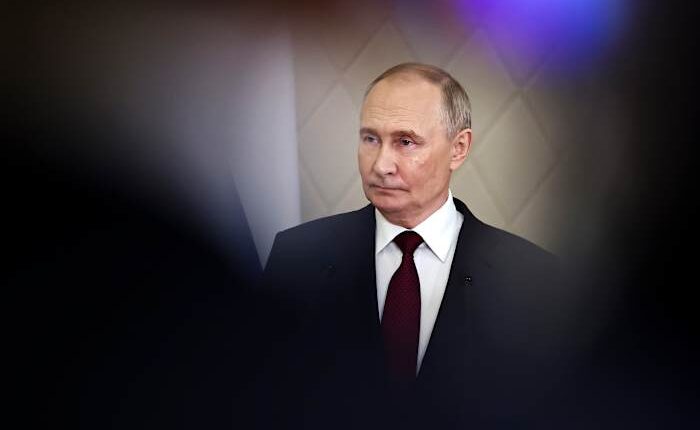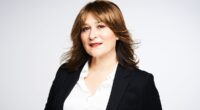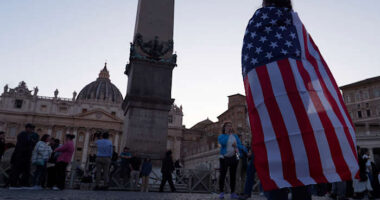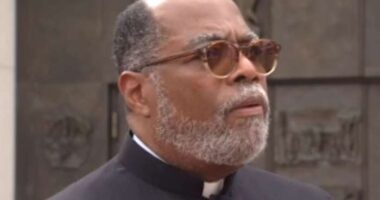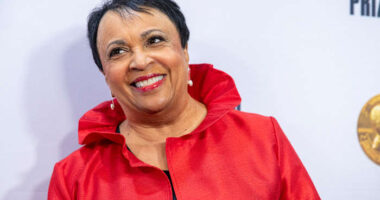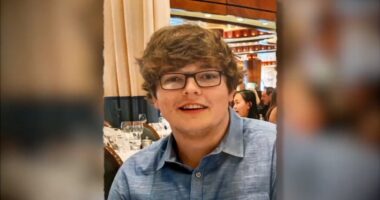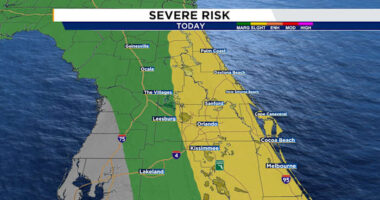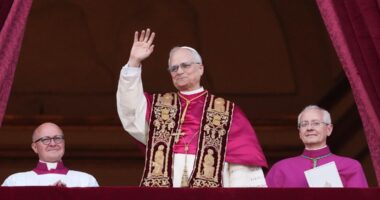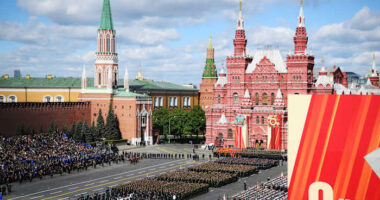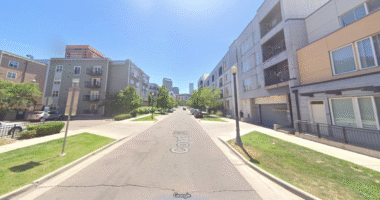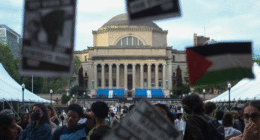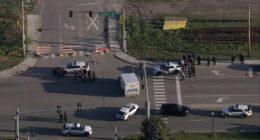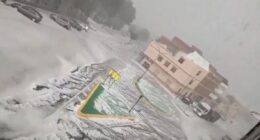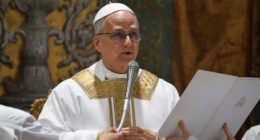
By 2024, President Vladimir Putin had solidified his control over Russia while attempting to address the country’s increasing isolation due to the conflict in Ukraine. However, his power faced ongoing tests, including a violent attack in Moscow and an intrusion by Kyiv’s forces into Russian territory.
The long-standing war in Ukraine, now approaching its third year, was entering a critical phase amidst a changing U.S. administration with uncertain support for Kyiv. Taking a retrospective look at the year, it’s evident that Putin encountered various challenges and developments.
January: A presidential campaign with no real opponents
During the year, Putin announced his candidacy for a fifth term as president, with most of his major political opponents either imprisoned or living in exile. Despite this dominance, an unexpected turn of events occurred when thousands of Russians braved the cold in January to sign petitions supporting an unlikely contender, Boris Nadezhdin. Nadezhdin, a 60-year-old lawmaker critical of the ongoing conflict, managed to gather the required 100,000 signatures to run for office. However, election authorities intervened and prevented his candidacy. Nevertheless, the significant support Nadezhdin received highlighted a growing anti-war sentiment and a desire among the public for increased political diversity, posing a challenge to Putin’s authority.
February: Alexei Navalny dies in prison
On Feb. 16, Putin’s longtime foe Alexei Navalny died in an arctic prison colony while serving a 19-year sentence on charges widely seen as politically motivated. The news of his death at age 47 shocked the world and robbed the opposition of its most charismatic leader. No exact cause of death was given, and his family and allies blamed the Kremlin, which denied involvement. Tens of thousands of mourners attended his Moscow funeral two weeks later in a show of defiance.
March: A concert massacre darkens Putin’s election win
On March 17, Putin secured his expected election triumph, which will keep him in office until 2030, following the harshest crackdown on dissent since Soviet times. Five days later, gunmen stormed a concert hall on Moscow’s outskirts, killing over 140 people and setting the venue ablaze. An affiliate of the Islamic State group claimed responsibility, although the Kremlin, without evidence, tried to blame Ukraine for the deadliest attack on Russian soil in almost two decades. The assault stunned the capital and rekindled memories of other attacks in the early years of Putin’s presidency.
June: Putin visits North Korea to forge stronger ties
Putin made a two-day visit to North Korea in June — his first in 24 years — as the countries deepened their ties in the face of intensifying confrontations with Washington. The pact signed by Putin and North Korean leader Kim Jong Un envisions mutual military assistance if either country is attacked. The new agreement marked their strongest link since the end of the Cold War, adding to concerns in Washington and Seoul.
July: Reporter Gershkovich convicted in a trial denounced as a sham
Wall Street Journal reporter Evan Gershkovich, arrested in March 2023 and accused of espionage, was convicted and sentenced to 16 years in prison in a swift trial. His employers and the U.S. government denounced the process as a sham and rejected the charges as fabricated. Without presenting evidence, authorities claimed he was gathering secret information for the U.S. Gershkovich, the American-born son of Soviet immigrants, was the first Western reporter arrested on espionage charges in post-Soviet Russia, in a chilling signal to international journalists.
August: Mass prisoner swap and Ukraine’s push into Kursk
On Aug. 1, Washington and Moscow completed the biggest East-West prisoner swap in post-Soviet history. Those released included Gershkovich and fellow American Paul Whelan, along with prominent Russian dissidents like Vladimir Kara-Murza and Ilya Yashin. The multinational deal freed two dozen people — including Vadim Krasikov, serving a life sentence in Germany for killing a former Chechen militant in Berlin.
Also in August, Ukraine launched a surprise incursion into Russia’s Kursk region in the largest cross-border raid by Kyiv’s forces. It exposed Russia’s vulnerabilities and dealt an embarrassing blow to the Kremlin, with tens of thousands of civilians fleeing the region. With the bulk of the Russian army engaged in eastern Ukraine, few troops were left to protect the Kursk region. Russia forces have since regained control over part of the territory but have so far failed to completely dislodge Kyiv’s troops.
September: Putin visits Mongolia without fear of arrest
Putin traveled to regional ally Mongolia in September in a move widely seen as an attempt to counter Western efforts to isolate him over the Ukraine war. Mongolia was among the countries that ratified a treaty establishing the International Criminal Court, which in 2023 issued an arrest warrant for Putin for alleged war crimes in Ukraine. Mongolia ignored calls to arrest the Russian leader and gave him a red-carpet welcome, with both countries signing deals on energy supplies and power plant upgrades.
October: US says North Korean troops are in Russia
In October, the Pentagon announced North Korea sent about 10,000 troops to Russia to join the fighting against Ukraine — a move Western leaders said will intensify the war and jolt relations in Asia. Moscow and Pyongyang have remained tight-lipped about the claims of deployment.
Putin also hosted a summit of the BRICS bloc of nations, attended by leaders or representatives of 36 countries, in what many saw as an effort to highlight the failure of U.S.-led efforts to isolate Russia.
November: A T
rump victory and a new lethal Russian missile
Former President Donald Trump won a new term in the White House in November, raising concerns that his administration would cut military support for Ukraine and force it to negotiate with Moscow. Current President Joe Biden allowed Kyiv to use U.S.-supplied longer-range weapons for deeper strikes on Russian soil.
Russia responded by firing a new hypersonic intermediate-range ballistic missile — called the Oreshnik — at a city in central Ukraine. Putin boasted the missile can’t be intercepted by air defenses. He warned that Moscow could use it for more strikes on Ukraine and also potentially to hit military facilities of NATO countries giving military support to Ukraine.
December: An ally falls, a bomb rocks Moscow and a plane crash draws an apology
The government of Syrian leader Bashar Assad crumbled after a lightning offensive by rebels. Putin granted asylum to Moscow’s longtime ally Assad and his family, but the Kremlin’s failure to prevent his downfall nine years after it intervened militarily to prop up his rule exposed the limits of Russia’s power and dented its international clout at a pivotal stage of its war in Ukraine.
Then, an embarrassing attack again brought the war to the streets of Moscow. Lt. Gen Igor Kirillov, the chief of Russia’s Radiation, Biological and Chemical Protection Forces, was killed alongside an aide by a bomb planted outside his apartment building. Putin described Kirillov’s killing as a “major blunder” by security agencies.
On the final weekend of the year, Putin apologized for what he called a “tragic incident” in Russian airspace involving the Dec. 25 crash of an Azerbaijani jetliner that killed 38 people in neighboring Kazakhstan. His statement came amid mounting allegations the plane was shot down by Russian air defenses trying to stop a Ukrainian drone attack near Grozny in the Russian republic of Chechnya. While Russian officials acknowledged that air defense systems were at work, Putin’s apology to Azerbaijan’s leader stopped short of saying Moscow took responsibility.
Copyright 2024 The Associated Press. All rights reserved. This material may not be published, broadcast, rewritten or redistributed without permission.
